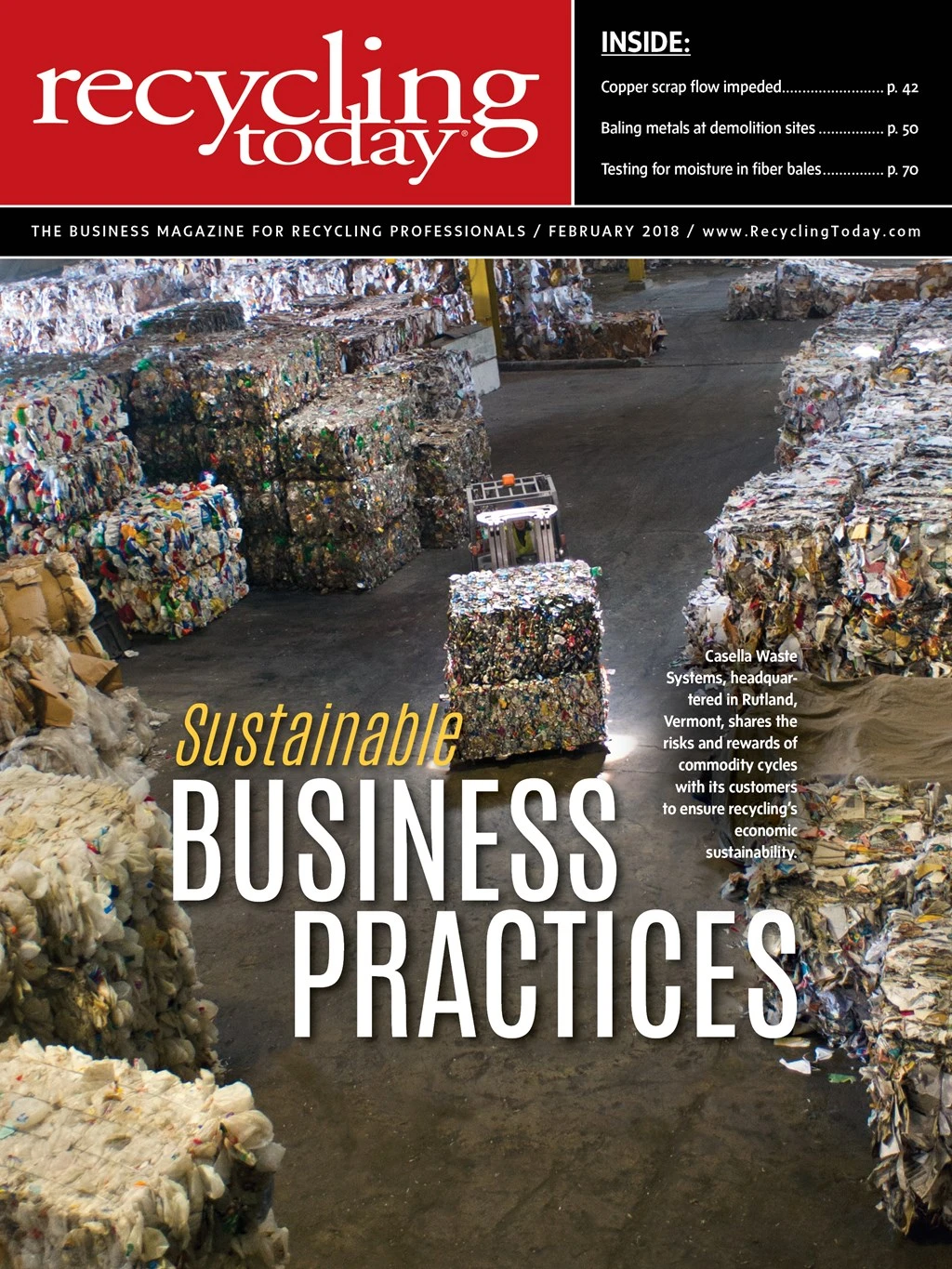After completing a year when only three of 12 months produced significant price declines, the ferrous market in January 2018 got off to another positive start for scrap processors and shippers.
Early January North American transaction pricing established by American Metal Market (AMM) showed across-the-board gains of from $28 to $34 per ton for all major grades consumed domestically or shipped overseas.
Slower holiday factory schedules and sometimes severe winter weather combined to pinch scrap flows in December 2017 and the first two weeks of January 2018.

AMM Midwest Scrap Index, No. 1 Busheling (blue circles): All prices are effective the 10th of the month or the following Monday if the 10th falls on the weekend. RMDAS Ferrous Scrap Price Index (black squares): Per gross ton for No. 2 shredded scrap, defined as 0.17 percent or greater copper content, effective the 20th of each respective buy month.
A ferrous trader who works with processors in the United States, Europe
Looking toward February, the trader wonders whether factories ramping back up at the same time bad weather is slowing retail flows into shredder yards will cause prompt grades to lose their January $40-to-$60 per ton premium over shredded scrap and No. 1 heavy melting steel (HMS).
“Right now, the price difference is about where you’d expect historically between prime and obsolete, but those spreads really tightened up a lot in 2017 under circumstances like this,” the trader remarks.
An AMM report from early January 2018 indicates some shredder operators in the U.S. were buying ferrous scrap on a thinner margin than they would prefer to procure enough feedstock to fill mill orders for the month.
The good news for ferrous scrap processors is that January pricing came in higher than expected. In December, processors contacted by Recycling Today were predicting prices might rise by $10 to $20 per ton, rather than gaining the $28 to $34 per ton they did.
In addition to tight supply, steady demand is contributing to the healthy ferrous scrap market. The Washington-based American Iron and Steel Institute (AISI) reported that in November 2017, U.S.-based steelmakers shipped 10.3 percent more steel than they did in November 2016.

In the first 11 months of 2017, the U.S. steel industry shipped 5.3 percent more steel to customers compared with the first 11 months of 2016—83.5 million tons versus 79.3 million tons.
Ferrous scrap exporters also enjoyed a rebounding market in 2017 and started off 2018 with some early January bids for No. 1 and No. 2 HMS that increased by $24 to $28 per ton from the month before, according to AMM.
By volume, in the first nine months of 2017, the U.S. exported 10.6 million metric tons of ferrous scrap, according to the U.S. Geological Survey. That figure is up by 16.8 percent compared with the 9.1 million metric tons shipped in the first three quarters of 2016.
The recent overall positive state of the market can be seen in financial statements of publicly traded companies that process ferrous scrap.
Texas-based Commercial Metals Co. (CMC) reported a $9.9 million operating profit for its Americas Recycling division during the three months from September through November 2017. That compared with a $5.1 million loss in the same time frame in 2016.
Oregon-based Schnitzer Steel Industries, which also treats September through November as a financial quarter, reported operating income of $35.2 million in its Auto and Metals Recycling (AMR) division in 2017 compared with $12.6 million from September through November 2016.
In a news release summarizing its results, CMC indicates “shipment volumes in comparison to the same period of the prior fiscal year increased by 44 percent as a result of higher domestic steel manufacturing utilization rates and [the] acquisition of yards completed during fiscal 2017.”
Regarding its results, Schnitzer President and CEO Tamara Lundgren
Veteran recyclers are aware positive momentum never lasts forever and likely are keeping their eyes on industry conditions, including excess global steelmaking capacity, and wider economic factors that could shift the momentum.
Domestically, some economists note the U.S. is entering its ninth consecutive year of uninterrupted gross domestic product (GDP) growth and that a “breather” might be expected.
Also, London-based BMI Research sees a 1.5 percent decrease in North American light vehicle sales in 2018, while Morgan Stanley predicts a 5 percent drop.

Explore the February 2018 Issue
Check out more from this issue and find your next story to read.
Latest from Recycling Today
- Phoenix Technologies closes Ohio rPET facility
- EPA selects 2 governments in Pennsylvania to receive recycling, waste grants
- NWRA Florida Chapter announces 2025 Legislative Champion Awards
- Goldman Sachs Research: Copper prices to decline in 2026
- Tomra opens London RVM showroom
- Ball Corp. makes European investment
- Harbor Logistics adds business development executive
- Emerald Packaging replaces more than 1M pounds of virgin plastic





